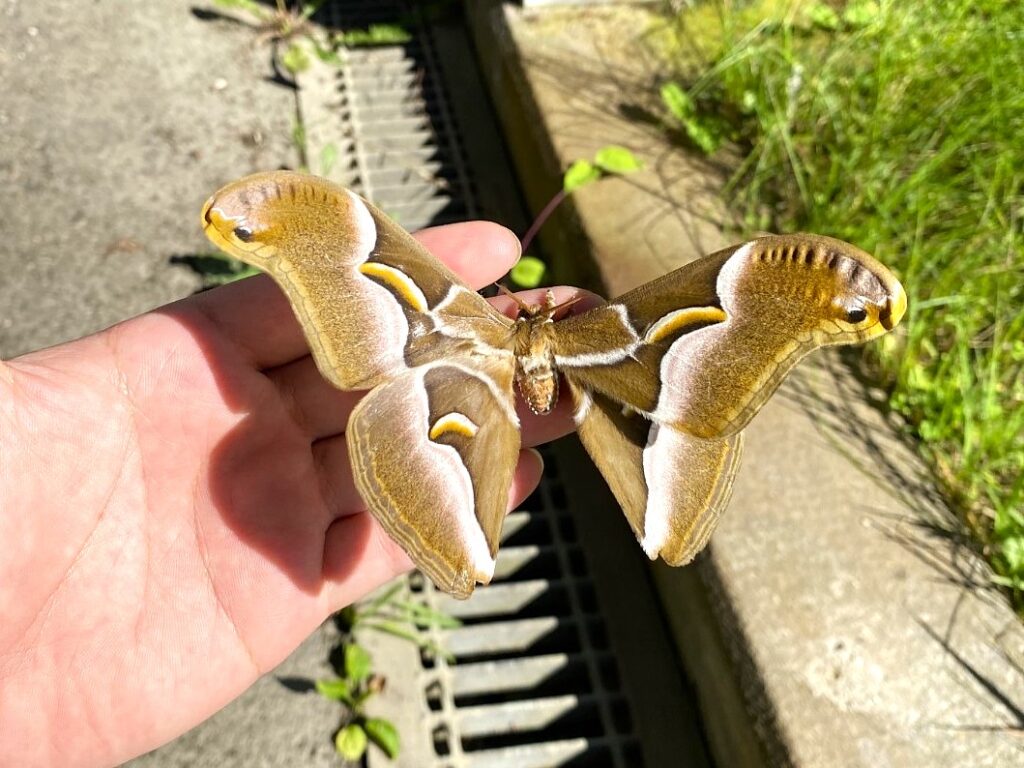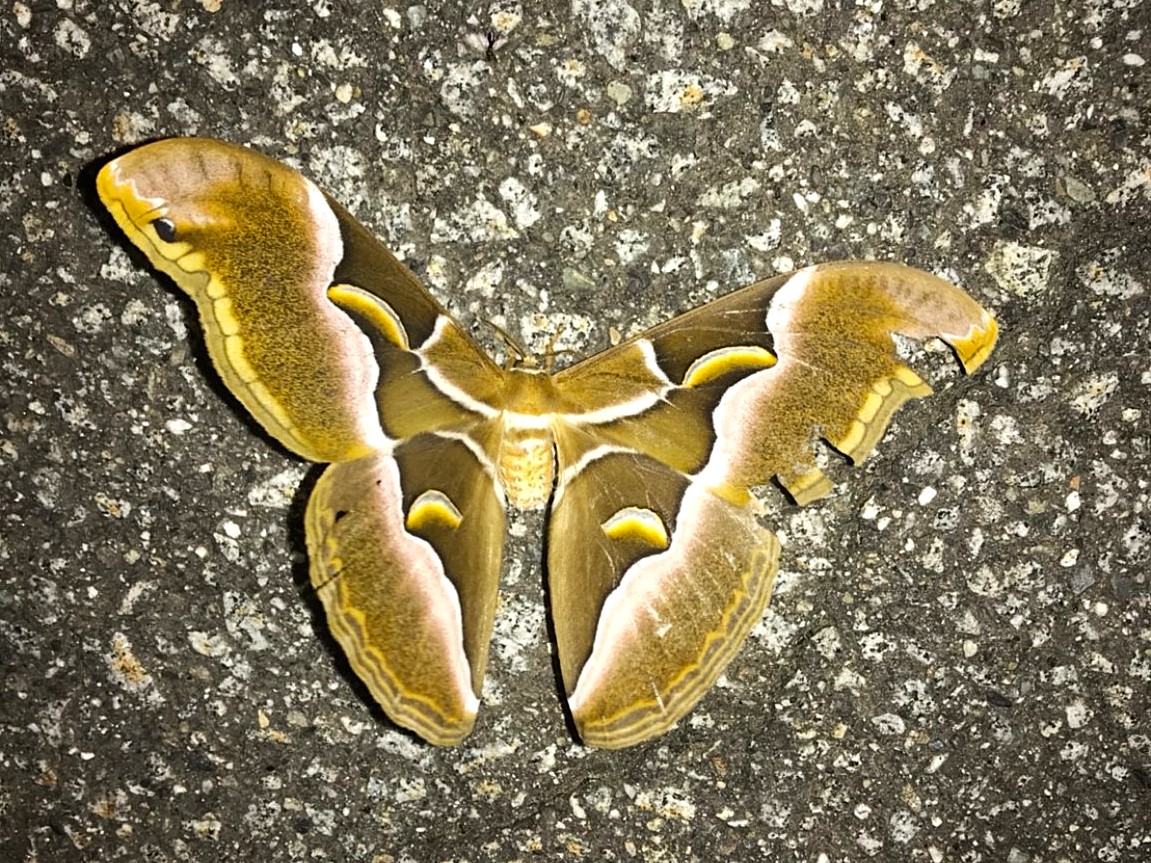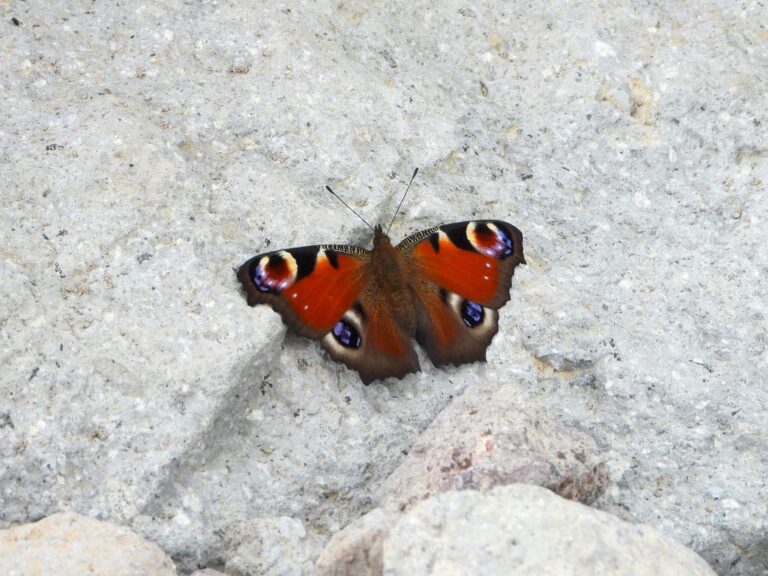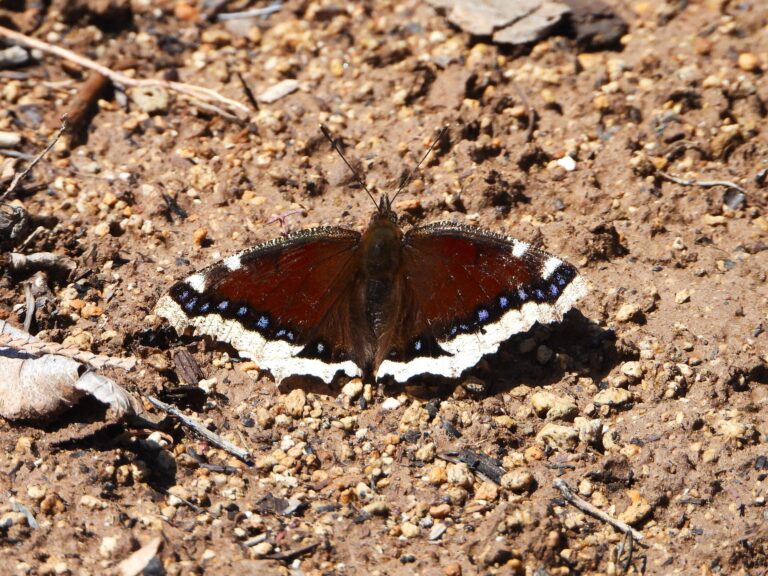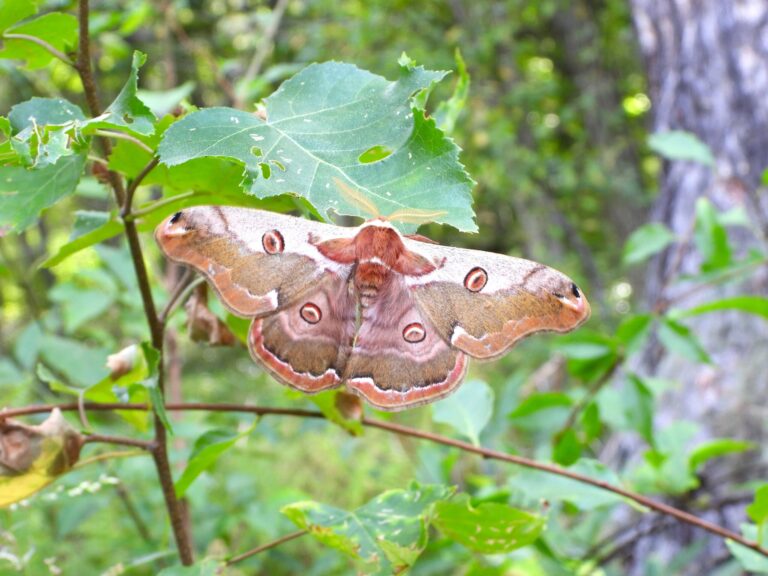Ailanthus Silkmoth (Samia cynthia pryeri) – Wildlife of Japan
Introduction
The Ailanthus Silkmoth (Samia cynthia pryeri), called Shinjusan in Japanese, is one of Japan’s largest and most elegant silk moths.
It belongs to the family Saturniidae and represents the Japanese subspecies of the widespread Samia cynthia complex.
The species name comes from its main host plant, the Ailanthus tree (Ailanthus altissima).
Because of its large size and crescent-shaped markings, it stands out as one of the most visually striking moths across Japan.
In addition, this species often symbolizes the quiet mystery of Japan’s summer nights.
Appearance
Adults reach a wingspan of 110–150 mm, displaying olive-brown to reddish-brown wings.
Each wing carries a transparent, crescent-shaped marking — a hallmark of the genus Samia.
A pale border runs along the outer margin of each wing, and females grow slightly larger and broader than males.
The body is densely covered with fine brown hairs, giving it a soft, velvety appearance.
Larvae show a greenish to yellowish-green body with bluish tubercles and can grow up to 60–70 mm in length.
Before pupation, they spin a strong silk cocoon wrapped in leaves and attach it securely to the host tree’s branches.
Unlike many butterflies, adults lack functional mouthparts and therefore do not feed.
As a result, their adult lifespan remains short, lasting only about a week.
Habitat & Distribution
This subspecies is endemic to Japan and occurs from Hokkaidō to Kyūshū, including Tsushima and northern parts of the Ryukyus.
It lives in broadleaf forests, forest edges, and semi-urban green spaces where host trees grow naturally.
The main host is Ailanthus altissima (Tree of Heaven), while secondary hosts include Melia azedarach, Juglans spp., Styrax japonicus, Cinnamomum camphora, and Toona sinensis.
Because of its adaptability, this moth can thrive even in areas close to human settlements.
Adults typically appear from May to August, producing one generation in northern Japan and sometimes two in southern regions.
Therefore, timing your observation around early summer evenings offers the best chance to see them.
Where to See in Japan
You can find the Ailanthus Silkmoth widely across Japan, even near towns and villages.
Artificial lights such as streetlamps often attract them during calm, humid nights.
Common observation sites include Hokkaidō (Sapporo), Honshū (Hiroshima, Tokyo, Nagano), and Kyūshū (Fukuoka, Kagoshima).
Encounters usually occur between 20:00 and 23:00, when adults glide slowly around lights.
For nature photographers, a white sheet and light setup near Ailanthus trees can be highly effective.
Behavior
Larvae feed openly on leaves and later move to solitary feeding as they grow.
They build their cocoons by wrapping leaves and overwinter as pupae.
Meanwhile, adults emerge in the following spring and take flight soon after their wings harden.
They are nocturnal and strongly phototactic, moving gently through warm summer nights.
After mating, females lay eggs directly on the underside of host leaves.
In contrast to their vivid appearance, adults live only 5–10 days, devoting their short lives entirely to reproduction.
Diet
Feeding occurs only during the larval stage.
Larvae feed primarily on Ailanthus altissima (Tree of Heaven) and occasionally on Melia azedarach, Juglans spp., Styrax japonicus, and Cinnamomum camphora.
Adults, having no working mouthparts, do not feed at all.
Consequently, they rely entirely on the energy stored from their larval phase.
Reproduction
Females lay around 20 to 25 eggs, often in small clusters on the underside of host leaves.
Eggs hatch in about 7–10 days, and larvae develop over roughly one month before pupation.
In colder regions, the species is univoltine (one generation), while in southern Japan, a partial second generation may occur.
Conservation
The Ailanthus Silkmoth is not endangered in Japan and remains locally common where host trees persist.
However, the removal of Ailanthus altissima (sometimes regarded as invasive) can reduce its numbers in certain areas.
Pesticide use and excessive light pollution also negatively affect nocturnal moths.
Therefore, protecting mixed forests and minimizing unnecessary lighting are crucial for maintaining healthy moth populations.
In addition, public awareness of moth ecology helps preserve biodiversity in both rural and suburban Japan.
Author’s Impression
The Ailanthus Silkmoth is a large moth with beautiful crescent-shaped markings that never fail to evoke a sense of mystery.
Its calm presence and moonlike patterns give it an almost spiritual beauty.
Sometimes, you might even find one resting at a countryside convenience store at night — a surprising reminder of how close Japan’s wild nature still is to everyday life.
Every encounter feels like meeting a quiet spirit of the summer night.
